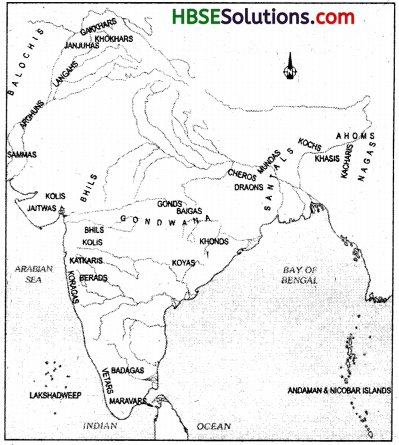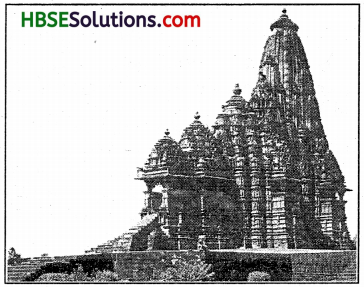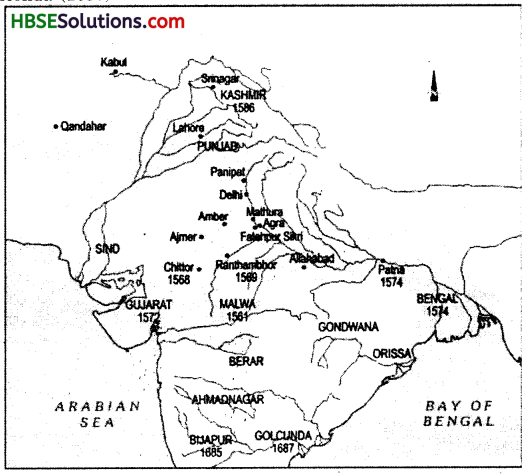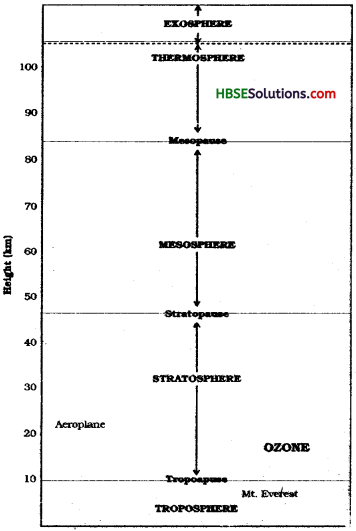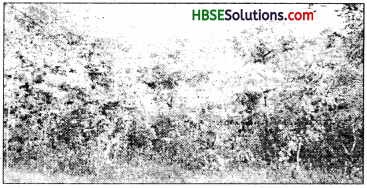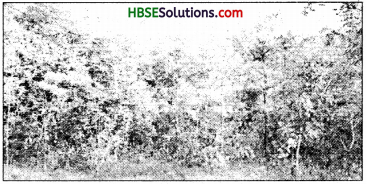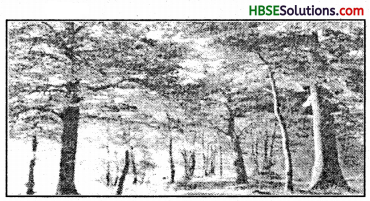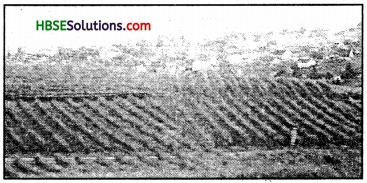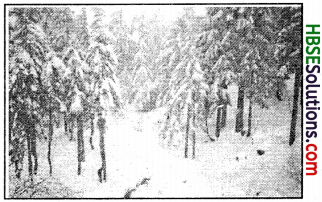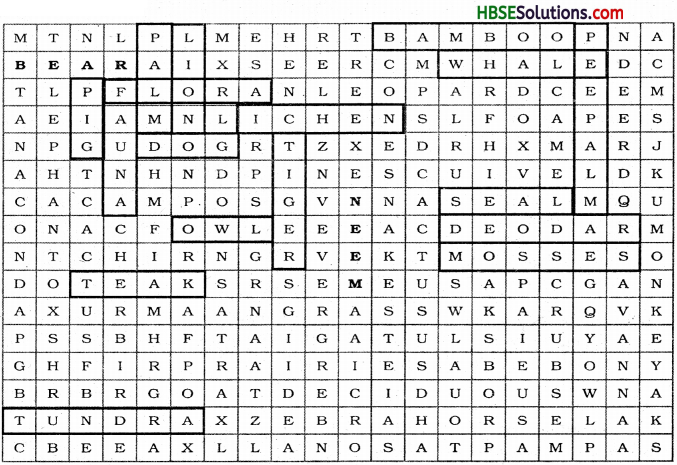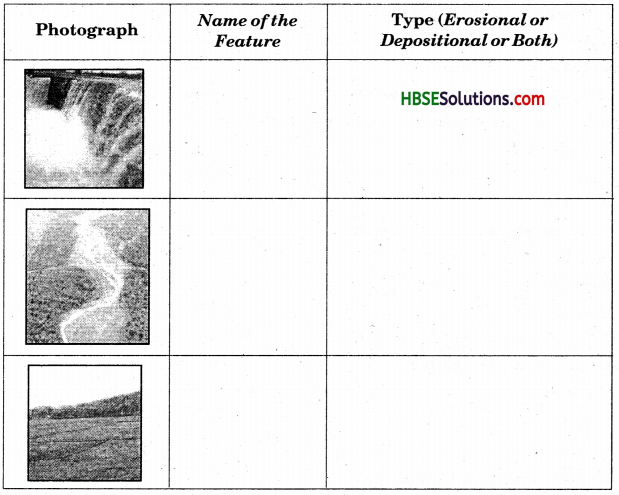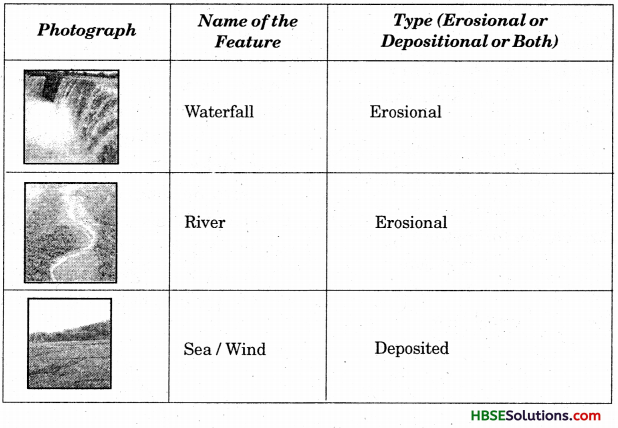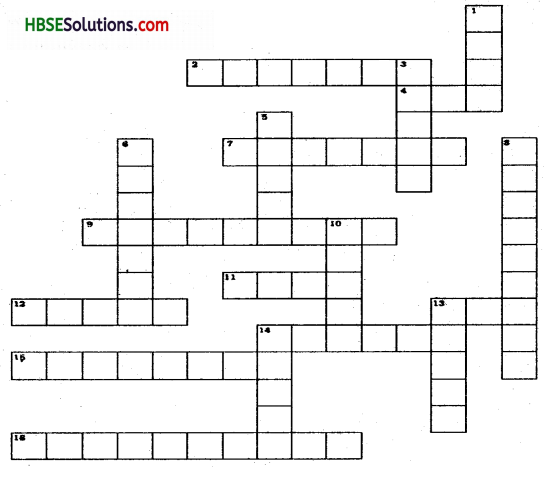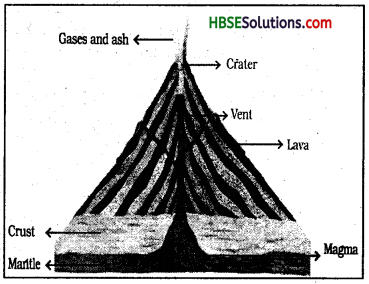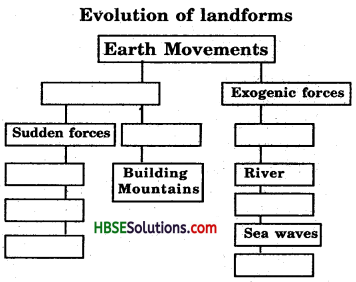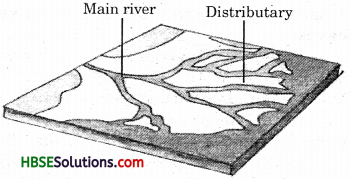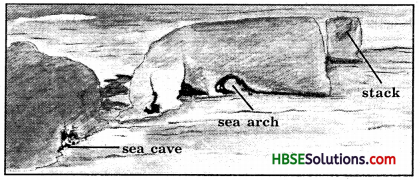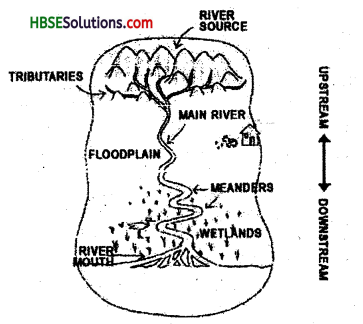HBSE 7th Class Social Science Solutions History Chapter 8 Devotional Paths to the Divine
Haryana State Board HBSE 7th Class Social Science Solutions History Chapter 8 Devotional Paths to the Divine Textbook Exercise Questions and Answers.
Haryana Board 7th Class Social Science Solutions History Chapter 8 Devotional Paths to the Divine
HBSE 7th Class History Devotional Paths to the Divine Textbook Questions and Answers
LET’S RECALL
Question 1.
Match the following:
| The Buddha | Namghar |
| Shankardeva | Worship of Vishnu |
| Nizamuddin Aulia | Questioned Social differences |
| Nayanars | Sufi Saint |
| Alvars | Worship of Shiva |
Answer:
| The Buddha | Questioned Social differences |
| Shankardeva | Namghar |
| Nizamuddin Aulia | Sufi Saint |
| Nayanars | Worship of Shiva |
| Alvars | Worship of Vishnu |
![]()
Question 2.
Fill in the blanks:
- Shankara was an advocate of …………… .
- Ramanuja was influenced by the …………… .
- ……………. , ………….. and ……………. were advocates of Virashaivism.
- …………. was an imkrtant centre of the Bhakti tradition in Maharashtra.
Answer:
- Advaita
- Alvars
- Basavanna, Allama Prabhu, Akkamahadevi.
- Pandharpur.
Question 3.
Describe the beliefs and practices of Nath Panthis, Siddhas and Yogis.
Answer:
(a) Nathpanthis, Siddhas and Yogis advocated renunciation of the world
(b) They believed that the path to salyation lay in meditation on the formless Ultimate Reality and the realisation of oneness with it.
(c) To achieve salvation, they advocated intense trading of the mind and body through practices like Yogasanas, breathing exercises and meditation.
(d) They did not believe in rituals and conventional religion.
Question 4.
What were the major ideas expressed by Kabir? How did he express these?
Answer:
I. Ideas of Kabir:
(i) Kabir’s teachings were based on a complete, indeed vehement, rejection of the major religious traditions.
(ii) His teachings openly ridiculed all forms of external worship of both Brahmanical Hinduism and Islam the pre-eminence of the priestly classes and the caste system.
(iii) Kabir believed in a formless Supreme God and preached that the only path to salvation was through bhakti or devotion.
II. How did Kabir express his ideas:
Kabir expressed his ideas through poetry and bhajans. The languages of his poetry was a form of spoken Hindi widely understood by ordinary people. He also sometimes used cryptic languages, which is difficult to follow.
We get to know of his ideas from a vast collection of verses called sakhis and pads said to have been composed by him and sung by wondering bhajan singers. Some of these were later collected and preserved in the Guru Granth Sahib, Panch Vani’and Bijak.
![]()
LET′S UNDERSTAND
Question 5.
What were the major belief and practices of sufis?
Answer:
(i) The sufis often rejected the elaborate rituals and codes of behaviour demanded by Muslim religion scholars.
(ii) They sought union with God much as a lover seeks his beloved with a disregard for the world.
(iii) Like the saint poets, the sufis to composed poems expressing their feelings, and a rich literature in prose, including anecdotes and fables, developed around them.
(iv) The sufis too believed that the heart can be trained to look at the world in a different way. They developed elaborate methods of training using Zikr (chanting of a name or sacred formula), contemplation, sama (singing), rags (dancing), discussion of parables, breath control, etc. under the guidance of a master or pir.
(v) Thus emerged the silsilas, a genealogy of Sufi teachers, each following a slightly different method (tariqa) oi instruction of ritual practice.
Question 6.
Why do you think many teachers rejected prevalent religious beliefs and practices?
Answer:
Many teachers rejected prevalent religious beliefs and practices because these were based on social differences, excess ritalism and outward display piety.
Question 7.
What were the major teachings of Guru Nanak?
Answer:
(i) Guru Nanak emphasised the importance of the worship of one God.
(ii) He insisted that caste, creed or gender was irrelevant for attaining liberation. His idea of liberation was baaed on the pursuit of active life with a strong sense of social commitment.
(iii) He used the terms nam, dan and isnan for the essence of his teaching, which actually meant right worship, welfare of others and purity of conduct.
(iv) He gave importance to right-belief and worship, honest living and helping others.
(v) Guru Nanak, thus, promoted the idea of equality.
LETS DISCUSS
Question 8.
For either the Virashaivas or the sants of Maharashtra, discuss their attitude towards caste.
Answer:
The attitude of Virashaivas or the sants of Maharashtra towards caste was as follows:
(a) They had a humanistic attitude.
(b) They believed in the equality of all human beings.
(c) They were against Brahmanical ideas about caste and the treatment of women.
- They believed that Bhakti means sharing other pains.
- They wished society where people could live in harmony without any feelings of high and low, rich and poor.
![]()
Question 9.
Why do you think ordinary people preserved the memory of Mirabai?
Answer:
Ordinary people preserved the memory of Mirabai because:
(i) Though she was a Rajput princess married intq the royal family of Mewar. But she had no interest of ‘worldly affairs.
(ii) She was devoted to Krishna and composed innumerable bhajans expressing her intense devotion.
(iii) Her devotion to her deity was supreme. She lived a simple life with ordinary people.
(iv) Her songs also openly challenged the norms of the ‘upper’ caste and became popular with the masses in Rajasthan and Gujarat.
LET’S DO
Question 10.
Find out whether in your neighbourhood these are any dargahs, gurudwaras or temples associated with saints of the bhakti tradition in your neighbourhood. Visit any one of these and describe what you see and hear?
Answer:
Yes, these are many dargah, gurudwara or temple associated with saints of bhakti tradition in our neighbourhood. I have visited all these religious places from time to time along with my mother or father or elder brother. I have seen that people go there with devotion and they after prayer and hear preaching of religious people with great devotion.
Question 11.
For any of the saint-poets where compositions have been included in this chapter, find out more about their works, noting down other poems. Find out whether these are sung, how they are sung, and what the poet wrote about?
Answer:
We have read about many bhakti saint and sufi saint in this chapter. I have heard about Kabir, Baba Guru Nanak, Mirabai, Goswami Tulsidas and Surdas. Their religious works poems, bhajans are read out and sung at religious place and by bhakt singers and poets. I have heard devotional song on radio and television. I have also read certain books related with above reffered saint poet.
Question 12.
There are Several saint poets whose names have been mentioned but their works have not been included in the chapter. Find out more about the language in which they were composed, whether their composition were sung and what their composition were about.
Answer:
(i) All Marathi saint such as Janeshwar, Namdev, Eknath an Tukaram had sung in Marathi.
(ii) Narsi Mehta had written and sung in Gujarati,
(iii) Tulsidas – Awadhi (Hindi)
(iv) Surdas – Brij Bhasha (Hindi)
(v) Mirabai – Rajasthani
(vi) Kabir – Hindi, Urdu, Punjabi, other languages.
(vii) Guru Nanak – Hindi, Punjabi
HBSE 7th Class History Devotional Paths to the Divine Important Questions and Answers
Very Short Answer Type Questions
Question 1.
What was the idea advocated in the Bhagavadgita?
Answer:
The idea that was advocated in Bhagvadgita was that of a Supreme God who could deliver humans from such bondage if approached with devotion.
Question 2.
What was Sangam literature?
Answer:
Sangam literature was the earliest example of Tamil literature, composed during the early centuries of the common Era.
Question 3.
What is Advaita?
Answer:
Advaita is the doctrine of the oneness of the individual soul and the supreme God which is the Ultimate Reality.
Question 4.
Who were Chokhamela?
Answer:
Chokhamela was the family who belonged to the ‘untouchable’ Mahar caste.
Question 5.
What was monotheism?
Answer:
Monotheism refers to submission to one God.
Question 6.
What was ‘Shariat’?
Answer:
‘Shariat’ was a holy lav/ developed by Muslim scholars.
Short Answer Type Questions
Question 1.
What were the ideas of Nayanars and Alvars for a new kind of Bhakti?
Answer:
The Nayanar and Alvars had the following ideas of Bhakti:
(A) They were sharply critical of the Buddhists and Jainas and preached love of Shiva or Vishnu.
(B) They drew upon the ideals of love and heroism as found in the Sangam literature and blended them with the values of bhakti.
(C) They went from place to place composing exquisite poems in praise of the deities enshrined in the villages they visited, and set them to music.
Question 2.
What were the developments in Bhakti movements^ between the tenth and twelfth centuries?
Or
How were links between Bhakti tradition and temple worship strengthened?
Answer:
(A) The Chola and Pandya kings built elaborate temples around many of the shrines visited by the saints- poets, strengthening the links between the bhakti tradition and temple worship.
(B) Their poems were compiled during this time.
(C) Religious biographies of the Alvars and Nayanars were composed.
Question 3.
What were the ideas and teachings of Shankara?
Answer:
The ideas and teachings of Shankara were as follows:
(A) He was an advocate of Advaita.
(B) He taught that Brahman, the only or Ultimate Reality, was formless and without any attributes.
(C) He considered world around us to be an illusion or maya.
(D) He preached renunciation of the world and adoption of path of the knowledge to understand the true nature of Brahman and attain salvation.
![]()
Long Answer Type Questions
Question 1.
What did the saints of Maharashtra do?
Answer:
(a) All saints of Maharashtra rejected all forms of ritualism outward display of piety and social differences based on birth.
(b) They even rejected the idea of renunciation and preferred to live with their families.
(c) They earned their livelihood like any other person, while humbly serving fellow human beings in need.
(d) They insisted that Bhakti lay in sharing others pain.
Question 2.
What is the uniqueness of the Bhakti saints?
Answer:
(i) The unique feature of most of the Bhakti saints is that their works were composed in regional languages and could be sung.
(ii) They became immensely popular and were handed down orally from generation to generation.
(iii) Usually, the poorest and women transmitted these songs, often during their own experience.
Map Time
Question 1.
On the political map of India, mark the state to which the following saints belong to:
(i) Guru Nanak
(ii) Dadu
(iii) Mirabai
(iv) Narsi Mehta
(v) Eknath
(vi) Namdev
(vii) Shankradeva
(vii) Chaitnyadeva
(ix) Kabir
(x) Ramananda
(xi) Raídas
(xii) Vallabhacharya
(xiii) TuJsidas
(xiv) Purand radas
(xv) Nammalvar
Answer:
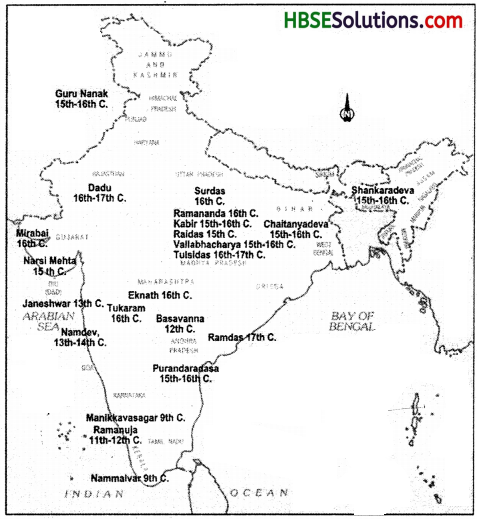
![]()
Devotional Paths to the Divine Class 7 HBSE Notes
- Koran: The holy book of the Muslims.
- Idol Worship: The image worship of God and Goddess.
- Kayamat: The day of Judgement before God.
- Ramjan: Month of fasting.
- Haj: Pilgrimage to Mecca.
- Sufi: The Muslim devotees who emphasized the personal devotion of man to God through lov^..
- Pirs: Religious teachers of the Sufis.
- Dohas: Couplets which Kabir composed and taught to his followers.
- Adi-Granth: The religious book of Sikhism.
- Bhakti: Trust in God.
- Tawakkul: Single-minded devotion to one God.
- Murids: The disciples are called murids in the Sufi system.
